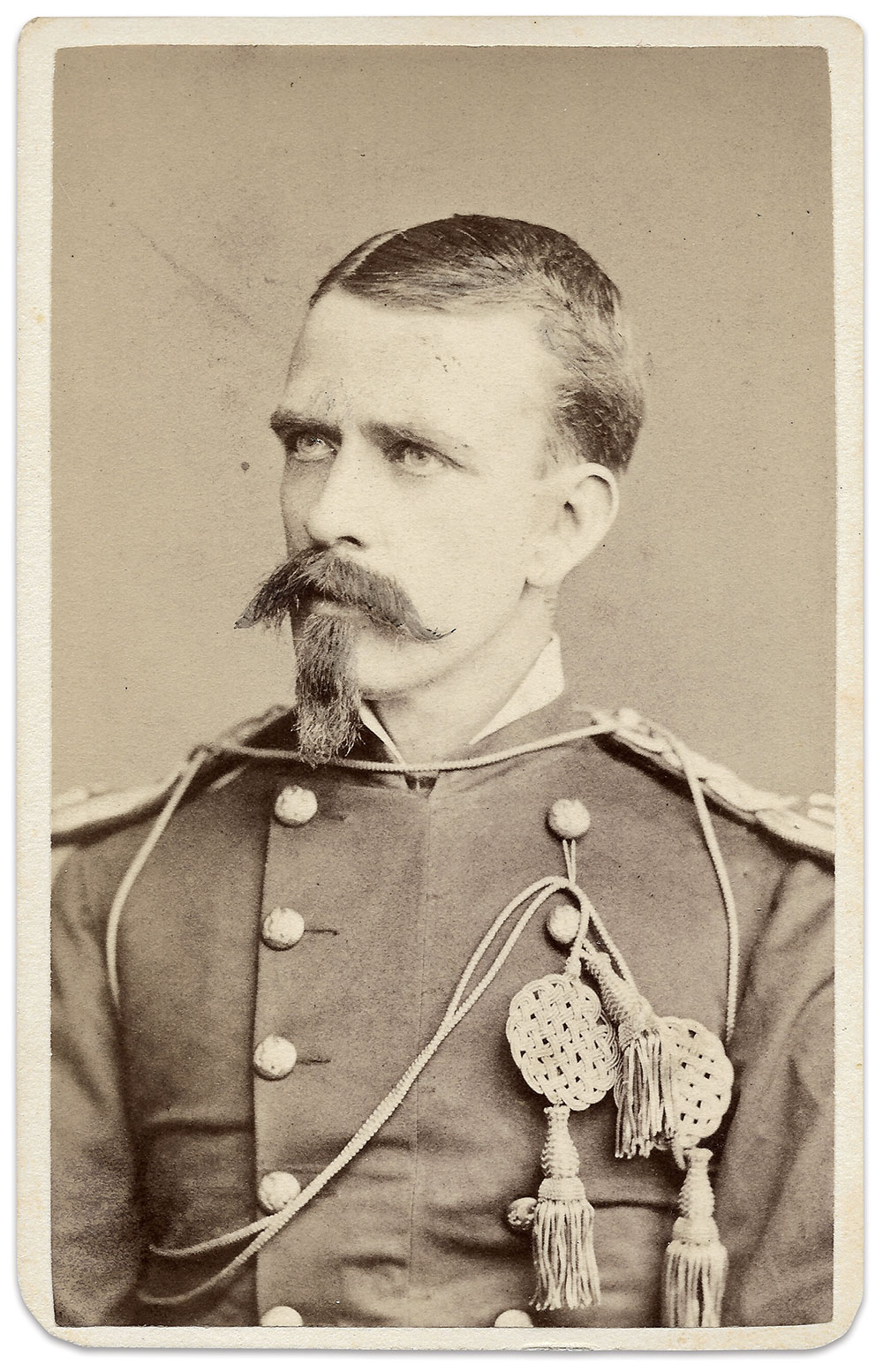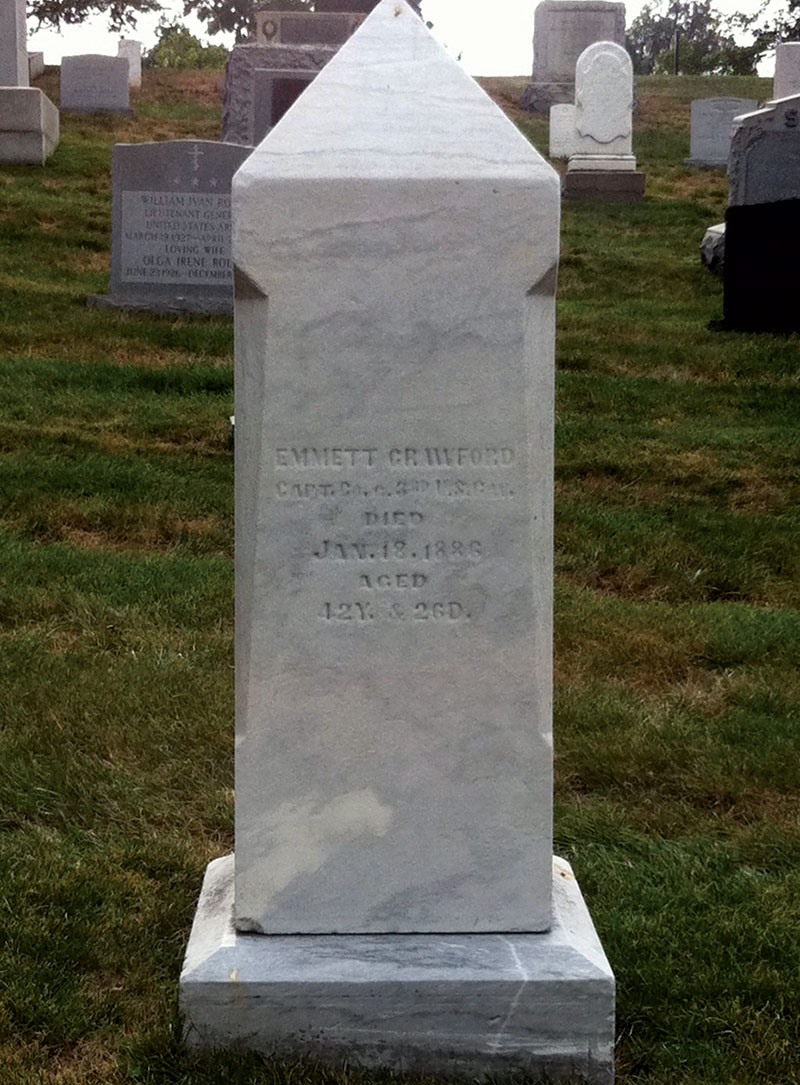By Perry M. Frohne
Long before Emmet Crawford met his death in the West, he proved himself a man of action. As a 16-year-old in May 1861, he lied about his age and enlisted in the 71st Pennsylvania Infantry. The regiment participated in numerous battles, including Antietam and the Second Battle of Fredericksburg. A month after Fredericksburg, in April 1863, Crawford was admitted to a hospital and treated for malaria. He was released in July 1864—just as the 71st mustered out.

Crawford immediately enlisted in the 197th Pennsylvania Infantry for a 100-day stint guarding prisoners of war at Rock Island, Ill. Here he applied for and received an officer’s commission and went on to serve in two U.S. Colored regiments. After the war he joined the Regular Army, served in the infantry, and was assigned to the 3rd U.S. Cavalry in 1871.
The next 15 years proved eventful. Crawford received a promotion to captain and was part of the Centennial Campaign, or the Sioux War of 1876.
On June 17, Crawford and the 3rd engaged Sioux warriors at the Battle of the Rosebud. About a week later, Lt. Col. George A. Custer and the 7th Cavalry were massacred at the Battle of the Little Bighorn.
In 1882, the army assigned Crawford to San Carlos, Arizona Territory, as military commander. He enlisted and trained Apache scouts along with Lt. Charles B. Gatewood, 6th Cavalry, and Lt. Britton Davis, 3rd Cavalry—both also becoming famous for doing so. The district commander, Gen. George Crook, came to rely on Crawford.
In early 1886, while searching for the Apache Chief Geronimo in Mexico’s Sierra Madre Mountains, Crawford paid the ultimate price after serving his country for 25 years.

On January 10, his command drove the Apaches from their camp and then occupied it. Exhausted, with their uniforms shredded from climbing up and down steep rocky terrain and marching through dense thorny undergrowth, they slept well.
At dawn the next morning, the Mexican military arrived on the outskirts of camp. It had also been in pursuit of the Apaches and was attracted by the smoke from the American’s campfires.
The Mexicans opened fire. Crawford’s Packmaster, Henry W. Daly, described what happened next. He heard Crawford’s Apache scouts “shouting “Nacoya, Nacoya, Mucho! (Mexicans, lots of Mexicans.) As the Apaches hate and despise the Mexicans, the firing soon became general on both sides.”
Crawford ordered two of his Spanish-speaking officers, along with two scouts, to diffuse the situation. But the firing continued unabated. Daly continued, “Captain Crawford took Scout ‘Dutchy’ with him, and handing his gun to him, climbed on top of a large boulder so that he could be seen distinctly by the Mexican troops. He was in the uniform of an American officer, although it was literally torn to shreds, and disfigured from all semblance of an uniform. Taking a handkerchief in each hand he waved them about his head, shouting ‘No tiro, no tiro, Americanos, Americanos!’”

Daly added, “About twenty-five yards distant from him and across a small ravine, a Mexican, taking a rest against the pine tree, took deliberate aim and shot down poor Crawford.” The bullet struck Crawford in the forehead, and he fell from the boulder, breaking his right arm and blackening one eye. He was unconscious by the time help arrived and lingered for several days. He quietly passed away while riding on a rough travois created for his comfort by comrades. He was 41.
Daly noted: “I cannot pass, in this poor account of his untimely death, without paying a tribute to this remarkable, manly man, whose character and worth were so well-known to me. He was the bravest among the brave; gentlest among the gentle; he forgave and overlooked the faults and frailties of others while being the most chivalrous and gentlemanly officer and man that I have ever known, in or out of the service. His loss to all those who knew him, and particularly to General Crook, was irreparable.”
In 1908, Crawford’s remains were disinterred and reburied in Arlington National Cemetery—not far from Gen. Crook.
Most Hallowed Ground is part of the Arlington National Cemetery (ANC) Book Project. Established by Jim Quinlan, owner of The Excelsior Brigade, its mission is to identify approximately 15,000 Civil War veterans interred on the hallowed grounds of the cemetery, and to provide a biographical sketch and photograph of each individual. If you have an image to share, or would like more information about the ANC project, please contact Jim at 703-307-0344.
SPREAD THE WORD: We encourage you to share this story on social media and elsewhere to educate and raise awareness. If you wish to use any image on this page for another purpose, please request permission.
LEARN MORE about Military Images, America’s only magazine dedicated to showcasing, interpreting and preserving Civil War portrait photography.
VISIT OUR STORE to subscribe, renew a subscription, and more.

